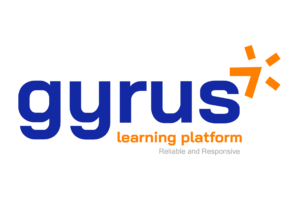
A Validated LMS Empowers Life Sciences Training
Why You Need A Validated LMS
In the life sciences industry, regulatory compliance is not just a legal obligation—it’s a foundational pillar of product safety, patient health, and organizational integrity. Among the most critical regulations impacting training programs is 21 CFR Part 11, the FDA’s rule governing electronic records and electronic signatures. For global companies, the European Union’s Annex 11 adds further complexity and rigor in ensuring you have a validated LMS.
At the center of these compliance frameworks is the Learning Management System (LMS)—a platform responsible for delivering, tracking, and recording training on standard operating procedures (SOPs), good manufacturing practices (GMP), and other essential topics. However, ensuring that an LMS meets validation and audit-readiness standards remains one of the biggest challenges for training and quality teams.
This article examines the intersection of LMS validation with 21 CFR Part 11 and EU Annex 11, the reasons why many organizations struggle with compliance, and how to implement best practices for a secure, reliable, and future-ready training environment.
Understanding 21 CFR Part 11: What It Means For Training
21 CFR Part 11, issued by the U.S. Food and Drug Administration (FDA), specifies the conditions under which electronic records and electronic signatures are considered trustworthy and equivalent to paper records. Any system that stores or processes training records in a regulated environment must be compliant. For LMS platforms, this means:
- Implementing audit trails to track all changes to training records.
- Supporting electronic signatures that are secure, unique, and traceable.
- Ensuring user authentication and role-based access control.
- Maintaining validated system performance through documented testing.
- Preserving data integrity, record locking, and controlled change management.
Noncompliance doesn’t just risk regulatory warning letters, it can undermine quality control and stall inspections or product approvals.
EU Annex 11: The European Counterpart To Part 11
In Europe, Annex 11 of the EU GMP guidelines covers computerized systems and aligns closely with Part 11. While both regulations aim to ensure data integrity and system reliability, Annex 11 places additional emphasis on risk-based validation, personnel responsibilities, and system lifecycle management. Organizations operating globally must ensure their LMS complies with both frameworks. Key overlapping requirements include:
- System validation to ensure accuracy, reliability, and consistent performance.
- Access control to restrict data manipulation.
- Audit trails for traceability.
- Data protection and backup mechanisms.
- Training for system users and administrators.
In essence, a compliant LMS must support secure operations and verifiable recordkeeping across all regulatory jurisdictions.
The Validation Challenge: Why It’s Often A Roadblock
System validation is one of the most misunderstood and resource-intensive components of LMS implementation in regulated industries. It is not enough to install software and assume compliance; the LMS must undergo installation qualification (IQ), operational qualification (OQ), and performance qualification (PQ) with documentation at each phase. Many companies run into problems because:
- LMS vendors may not provide validation documentation, leaving internal teams to build it from scratch.
- Customizations increase the validation scope, requiring more test cases and change control processes.
- Lack of internal expertise in FDA or EMA expectations leads to audit findings.
- Frequent software updates without revalidation can inadvertently break compliance.
These obstacles often force teams to delay implementation or operate outside the system with spreadsheets or manual recordkeeping, ironically increasing regulatory risk.
Best Practices: How To Ensure Your LMS Is Validation-Ready
To overcome these challenges, life sciences organizations should follow a set of proven strategies when evaluating and implementing LMS platforms in GxP environments:
1. Use A Risk-Based Validation Approach
Focus validation efforts on areas that affect patient safety and product quality. Leverage GAMP 5 guidelines and align with your internal risk management protocols.
2. Insist On A Validation Toolkit
Select LMS vendors who offer prewritten validation packages, including IQ/OQ/PQ protocols, traceability matrices, and test scripts.
3. Plan For Change Management
Implement SOPs to control software updates, configuration changes, and revalidation cycles. Every system change should be risk-assessed and documented.
4. Establish A Validation Binder
Maintain a centralized repository for validation documents, test results, deviations, and approval workflows. This will simplify audit responses and internal QA reviews.
5. Secure The System
Ensure that the LMS supports multifactor authentication (MFA), encrypted user credentials, role-based access, and record locking for completed training.
6. Monitor Audit Trails And Signatures
Make sure every record—such as training completions, quiz scores, and certification approvals—is stamped with user identity, timestamp, and un-editable history.
7. Train The Trainers And Admins
Regulatory compliance applies to how the system is used, not just how it’s built. Provide training on validation protocols, signature requirements, and SOP-driven course management.
Preparing For Inspections: LMS As An Audit-Ready System
Regulatory inspectors now expect LMS platforms to function as digital sources of truth. During audits, agencies often request:
- Complete training records for specific roles or individuals.
- Proof that mandatory training was completed before work began.
- Evidence of electronic signatures and timestamps.
- Change history for SOPs or course versions.
- Validation documentation and test results.
A compliant, validated LMS enables you to retrieve this information quickly, accurately, and without modification—a major differentiator in high-stakes inspections.
Global Harmonization: One LMS, Multiple Standards
As more life sciences companies operate globally, the pressure to meet both U.S. and EU standards has increased. Regulatory authorities are moving toward greater harmonization in data integrity, security, and training documentation. An LMS that meets 21 CFR Part 11 and EU Annex 11 requirements not only reduces risk but also facilitates:
- Cross-border product registrations.
- Global workforce onboarding.
- Unified reporting for inspections.
- Streamlined internal and external audits.
Investing in a validated LMS that is audit-proof is no longer optional, it’s part of modern operational excellence. The path to compliance with 21 CFR Part 11 and EU Annex 11 may be complex, but it is achievable with the right systems and processes in place. An LMS used in a regulated life sciences environment must be validated, secure, and traceable—not only to meet current regulatory expectations but also to future-proof training operations. By embracing best practices in system validation and regulatory readiness, organizations can transform their LMS from a compliance obligation into a strategic advantage.
Source link




